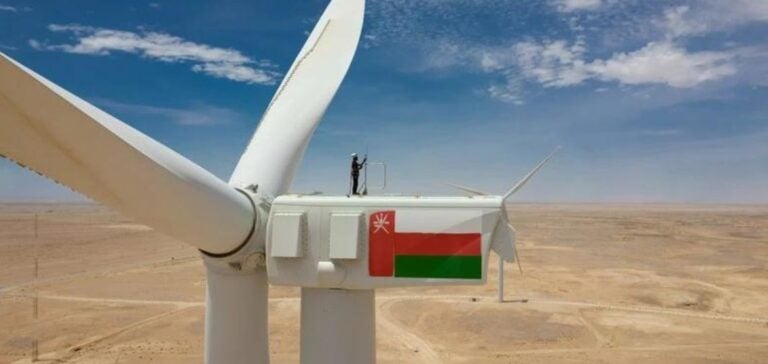Oman is embarking on a significant energy transition by shortlisting twelve developers for five wind power projects. This initiative is part of its energy diversification program, which aims to increase the share of renewable energies in the national energy mix.
In line with Oman Vision 2040, the country aims to achieve net zero emissions by 2050.
These wind projects represent a key step towards achieving these ambitions, by integrating modern technologies and sustainable practices.
The shortlisted wind projects include a variety of installations, each with its own specific characteristics.
The Jalan Bani Bu Ali Wind IPP project, located in the South Sharqiyah governorate, plans a capacity of 91-105 MW, with commercial commissioning expected in the first quarter of 2027.
In Duqm, the Duqm Wind IPP is planned to have a capacity of 234 to 270 MW, with commissioning scheduled for the fourth quarter of 2027.
These projects aim to strengthen Oman’s energy infrastructure while diversifying energy sources.
Details of Wind Projects
The Mahoot I Wind IPP project, which will take place in the Al Wusta governorate, boasts a capacity of 342 to 400 MW, representing an investment of RO187 million.
Commissioning is also scheduled for the fourth quarter of 2027.
In addition, the Dhofar II Wind IPP, adjacent to the existing Dhofar Wind I IPP, will have a capacity of 114 to 132 MW, with commercial operation scheduled for the second quarter of 2027.
Finally, the Sadah Wind IPP, located in Sadah in the Dhofar governorate, will have a capacity of between 81 and 99 MW, with commercial operation expected in the fourth quarter of 2027.
Shortlisted developers for these projects include a mix of international and local companies, such as ACWA Power, Sembcorp, Sumitomo, TotalEnergies, Masdar, and EDF Renouvelables.
These companies were chosen following a rigorous evaluation process, taking into account their expertise and ability to deliver competitive renewable energy solutions.
This diversity of partners underlines Oman’s commitment to working with recognized players in the field of renewable energies.
Background and objectives
The total investment for these projects is estimated at RO 500 million, or around USD 1.2 billion, and the combined generating capacity is expected to exceed 1 GW.
Once operational, these projects will help reduce carbon emissions by over 978,000 tonnes per year, while increasing the country’s renewable energy production capacity.
This initiative is part of a wider strategy to produce 30% of Oman’s energy needs from renewable sources by 2030.
The importance of these projects is not limited to increasing energy capacity.
They also represent an opportunity for Oman to strengthen its position in the global renewable energy market.
By integrating advanced technologies and collaborating with leading companies, the country is positioning itself as a key player in the region’s energy transition.
It could also stimulate innovation and the development of new skills within the local energy sector.
Future prospects
Oman’s wind power projects are part of a global context in which the transition to more sustainable energy sources is becoming increasingly urgent.
Countries around the world are seeking to reduce their dependence on fossil fuels and adopt more environmentally-friendly energy solutions.
In this context, Oman stands out for its proactive approach and investments in renewable energies.
The impact of these projects on the local economy and the environment will be closely monitored.
The results obtained could serve as a model for other countries in the region seeking to diversify their energy mix.
By integrating sustainable practices and collaborating with industry experts, Oman could not only meet its decarbonization targets, but also strengthen its economic resilience in the face of future energy challenges.






















